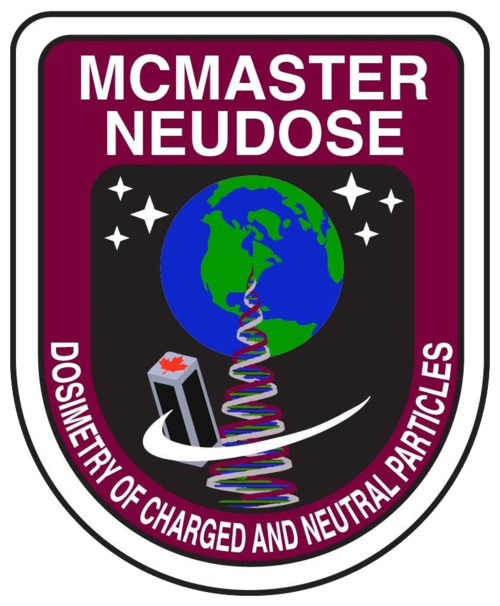It might be exam season, but the McMaster NEUDOSE team is still working hard on our project! Some of our team members spent an afternoon testing the Silicon Photomultiplier (SiPM) data acquisition board, also designed by our students. This board collects data from the Anti-Coincidence Detector (ACD) of the radiation detection system, and performs preliminary data processing. Take a look at the neat green LED on the board!
Official McMaster NEUDOSE Merchandise Available
Don't know what to get that special someone for the holidays? McMaster NEUDOSE is very excited to announce the availability of official NEUDOSE merchandise! Orders can be delivered to or picked up on campus, just let us know where! Click here to see what's available!
NEUDOSE's Role In Radiation Risk Assessment for a Human Mission to Mars
Last week, Josip Zic, Sectional Manager at Ontario Power Generation and PhD Candidate in the Radiation Sciences Graduate Program at McMaster University, presented his comprehensive exam. His presentation outlined the radiation risk for a human mission to Mars. In his outline of radiation risk assessment, he spotlighted the work being done in our NEUDOSE mission. It was a great honour to be mentioned alongside other new and innovative methods for classifying and analyzing the hazards astronauts are exposed to during human space flight.
Mechanical Structure of the Entire Satellite
Pictured above is a photograph of the entire mechanical structure of the McMaster NEUDOSE satellite. The 10cm x 10cm x 30cm satellite is about the same size as a loaf of bread. Mounted inside the satellite is the Tissue Equivalent Proportional Counter (TEPC), a major component of the radiation detection system. The panels protruding from the aluminum body contain the solar panels that will convert solar energy to electrical energy for the satellite.
Thank you, McMaster Engineering Society!
McMaster NEUDOSE would like to thank the McMaster Engineering Society for providing funding to our team from their Special Projects Fund. This funding will be used in the design and construction of components for the ground station. The ground station will be the hub here on Earth that will be used to communicate with the satellite when it is out in space.
The McMaster Engineering Society has also given us support in the past, and we greatly appreciate their continuous support!
To learn more about the MES and our other supporters, click here.
Solar Panel Deployment Demonstration
This is a slow motion video of the solar panel deployment demonstrated at the McMaster NEUDOSE STARS event on November 10, 2016. The solar panels are held in using nichrome wire. When an appropriate current is applied to the wire, it will burn, allowing the solar panels to spring outward. These solar panels will convert energy from the sun to usable electricity for the satellite.
Support Us!
Want to support our project? McMaster NEUDOSE is accepting donations on our official McMaster University fundraising page. All donations will go directly to the launch of our satellite. If you would like to contribute, please click here! Donations through this page are eligible for a tax receipt. Thank you so much for your support!
Many Thanks to Altium!
McMaster NEUDOSE would like to thank our newest sponsor, Altium! Altium has provided NEUDOSE with software licenses that will allow us to thoroughly and completely design printed circuit boards for many of the components of the satellite. We look forward to making great strides in our progress with Altium!
To learn more about Altium and our other sponsors, click here.
STARS - Out of This World!
The McMaster NEUDOSE team would like to thank everyone that attended the STARS event. It was such a success and we had an incredible time sharing our progress with you all. Filled with interactive demonstrations and exciting visuals, we hope everyone was fully engaged and enjoyed their time with us. We look forward to continuing to share our progress with you!
To see photographs of the event, click here!
McMaster NEUDOSE STARS is One Day Away!
We are excited to announce that we will have McMaster NEUDOSE merchandise for sale at our tech show tomorrow! We will also be raffling off official NASA merchandise!
We hope to see you all there for exciting live demonstrations and visual simulations of technology designed and developed by McMaster students!












